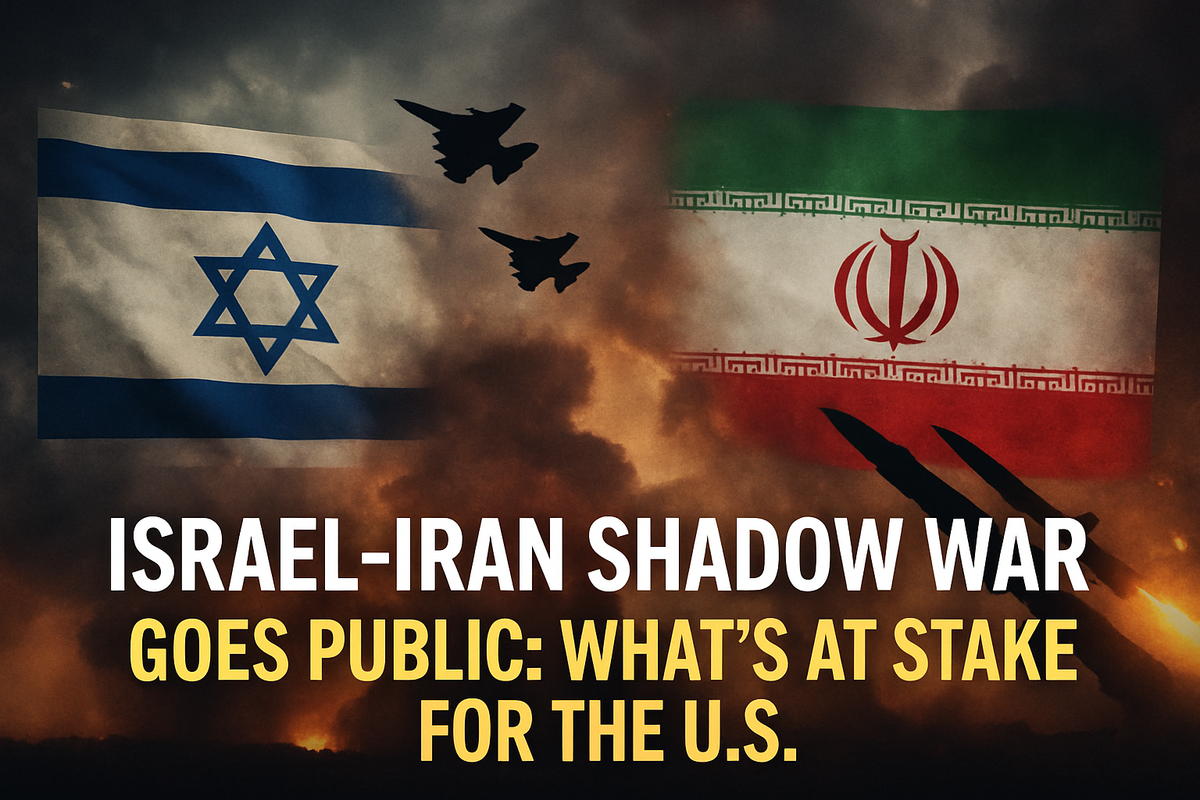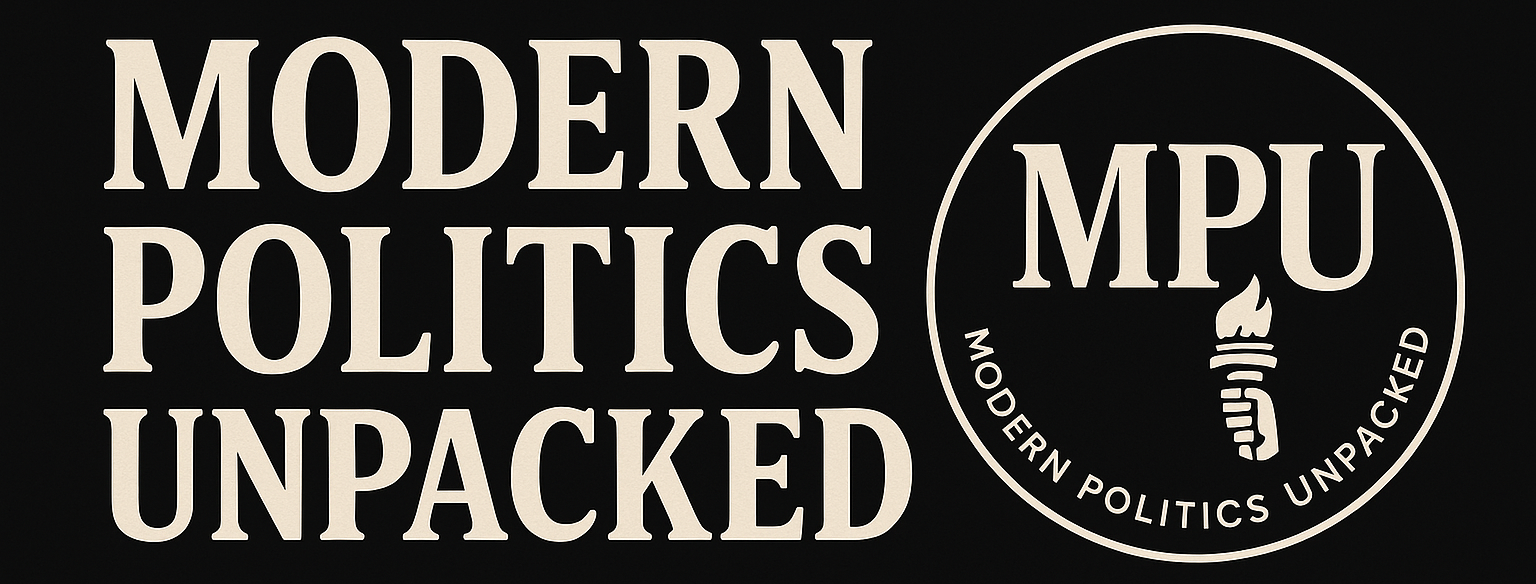Israel-Iran Shadow War Goes Public: What’s at Stake for the U.S.?

For years, Israel and Iran waged a "shadow war" far from the public eye — assassinations, cyberattacks, sabotage at sea. But in 2025, that war burst into the open. After direct missile and drone attacks exchanged between the two nations, the Middle East is facing one of its most dangerous escalations in decades. For the United States, the stakes are enormous: military, economic, diplomatic, and domestic. In this article, we unpack how this once-cloaked conflict is redefining American priorities and risks in the region and beyond.
The Timeline: From Covert Clashes to Open Conflict
Key recent developments:
- April 1, 2025: An Israeli airstrike targets a senior Iranian Revolutionary Guard commander in Damascus.
- April 13, 2025: Iran responds with an unprecedented direct missile and drone attack on Israeli territory.
- April 15, 2025: Israel retaliates with a precision strike deep inside Iran, targeting military installations.
- April 18, 2025: Skirmishes erupt between Hezbollah (Iran's Lebanese proxy) and Israeli forces along the northern border.
- April 20, 2025: U.S. forces in Iraq and Syria come under fire from Iranian-backed militias.
For decades, Israel and Iran fought indirectly — through militias, proxies, and cyber operations. This direct, overt conflict signals a major shift with global consequences.
Why This Conflict Is Different This Time
Unlike past skirmishes, the new phase is characterized by:
- State-to-state attacks: No longer hiding behind proxies or cyberattacks.
- Public acknowledgment: Both Israel and Iran openly claim responsibility.
- Global visibility: International media, markets, and governments are watching minute-by-minute.
- Expanded battlefield: Conflict is affecting Iraq, Syria, Lebanon, and even the Persian Gulf maritime routes.
Experts warn that direct war between two nation-states, both with advanced weaponry and regional influence, risks spiraling into a much larger regional war — potentially drawing in superpowers.
The U.S. Position: Caught Between Ally and Adversary
The United States has long walked a tightrope between defending Israel, deterring Iran, and avoiding entanglement in new Middle East wars.
Today, Washington faces urgent choices:
- Military support for Israel: Biden reaffirmed "ironclad" support, but avoids sending combat troops.
- Diplomatic pressure: Urging de-escalation through allies like Jordan, Egypt, and Oman.
- Troop protection: U.S. bases in Iraq, Syria, and the Gulf are on high alert.
- Global balancing act: Trying to keep focus on competition with China and Russia while a Middle East fire demands attention.
Recent moves:
- Deployment of additional Patriot missile defense batteries to the region.
- Naval maneuvers to secure oil shipping lanes in the Strait of Hormuz.
- Secret talks with European allies about sanctions or diplomatic options.
Why Americans Should Care
At first glance, another Middle Eastern conflict may feel distant to everyday Americans. But the consequences are real and tangible.
1. Energy Prices
- Instability in the Persian Gulf threatens global oil supply.
- Gas prices are already spiking nationwide — up 12% since the first Israeli-Iranian strikes.
2. Risk of War
- If Iran attacks U.S. troops or Israel escalates massively, America could be pulled into a wider conflict.
- Even limited U.S. involvement would mean additional military deployments and costs.
3. Global Diplomatic Focus
- Resources pulled into Middle Eastern conflicts mean less U.S. focus on China (South China Sea tensions) and Russia (Ukraine war).
4. Political Fallout
- Foreign policy crises often reshape presidential elections.
- A major Middle East war could impact Biden’s approval ratings and the 2026 midterms.
How Other Players Are Reacting
Russia
- Seeking to exploit U.S. distraction.
- Offering quiet diplomatic backing to Iran.
China
- Calling for “restraint” but quietly deepening economic ties with Iran.
- Worried about oil supply disruptions that would hurt its economy.
Saudi Arabia and Gulf States
- Fearful of conflict spillover.
- Quietly aligning more with Israel against Iran, despite public neutrality.
European Union
- Pushing for immediate ceasefire.
- Focused on preventing another refugee crisis if war spreads.
Possible Scenarios Ahead
1. De-escalation through diplomacy
- U.S., Qatar, Oman, and Jordan mediate ceasefire.
- Likely but requires rapid, secretive negotiations.
2. Prolonged low-intensity war
- Continuing tit-for-tat strikes without full-scale invasion.
- Would keep oil markets jittery and risk occasional U.S. casualties.
3. Regional War
- Hezbollah, Iraqi militias, and Houthis fully join Iranian side.
- Israel launches broader attacks on Iranian nuclear sites.
- U.S. drawn in to defend Israel and protect regional bases.
4. Political Changes
- Israeli elections could reshape its government's strategy.
- Iranian domestic unrest (protests growing since 2024) could weaken Tehran’s resolve or harden it.
What the Biden Administration Must Navigate
Key challenges:
- Avoiding an unpopular ground war while protecting allies.
- Managing rising energy costs at home.
- Keeping military forces protected without provoking Iran.
- Convincing China and Russia not to exploit the crisis.
- Holding the Western alliance together as Europe grows more nervous.
Possible actions:
- Expand back-channel diplomacy.
- Issue clear "red lines" privately to Iran.
- Engage Saudi Arabia and UAE to pressure Iran indirectly.
- Increase naval presence but avoid combat engagements.
Conclusion
The Israel-Iran shadow war has gone public, and with it, the risk of a broader Middle East conflagration. For the United States, the challenge lies not just in protecting an ally but in avoiding yet another endless war while keeping eyes on the broader strategic chessboard. Every missile launched between Tehran and Tel Aviv now echoes in Washington, D.C. — and on Main Streets across America. Whether the Biden administration can manage this volatile moment without a new regional war may define the next chapter of U.S. foreign policy.
